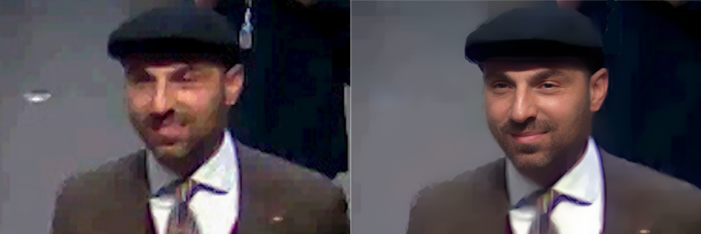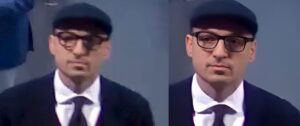
Artificial intelligence computers are on the rise. For example, the interest in ChatGPT, the virtuoso language model that writes articles and can answer questions, is so great that the servers regularly go down due to overload. But developments in the field of image recognition and improvement are going at least as fast. AI is also the key to success here. Detective photos and surveillance images can be dramatically improved. Blurred photos become sharp. Black and white images become color. In Panorama this week an extensive story about the latest techniques for detecting criminals.
By means of Vincent Verweij
One of the most advanced systems has been developed at Singapore University of Technology. The model can enhance images of low-quality faces, sharpen them and reduce noise. The computer has been trained with photos of 70,000 different people. Panorama tested the system with some suspects from last year’s TEFAF jewelry heist. Details in the face, such as beard growth, eyes and ears, suddenly become clearly visible. The images double in size, while the sharpness and quality increase. To date, the surveillance images have not led to useful tips or the arrest of a suspect, despite half a million tip money. But experts say that is about to change. ‘Wow, amazing’, responds art detective Arthur Brand when he sees the photos, ‘if they don’t get caught now, I don’t know what will. This kind of technology could well mean a breakthrough in quite a few things’.

Panorama also shows old black-and-white images of, for example, Sam Klepper and Big Willem van Boxtel, which are given sharpness and color again. And of the assassination of President John F. Kennedy, in which hi-tech software from Singapore is used to make blurry images of bystanders recognizable again.
Science
According to scientists, AI will play an increasingly important role in the investigation. Professor Michael Lew, professor of computer science in Leiden: ‘In China, but also the police in London use a network of cameras to search ‘real time’ for criminals. The cameras hang in the streets and in the subway and continuously compare the faces of passers-by with a database of fugitive criminals. They use very fast supercomputers for this. In the Netherlands this is not possible due to legal restrictions.’
Police
The police confirms that there are still legal obstacles to the widespread use of AI. ‘The starting point is that you improve images in such a way that you don’t create information that isn’t actually there. You can just create the wrong person who has nothing to do with the crime. Information that is not available in the image cannot be used as evidence either,’ says Mireille Beentjes on behalf of the National Police force management.
Panorama is on newsstands from today.




